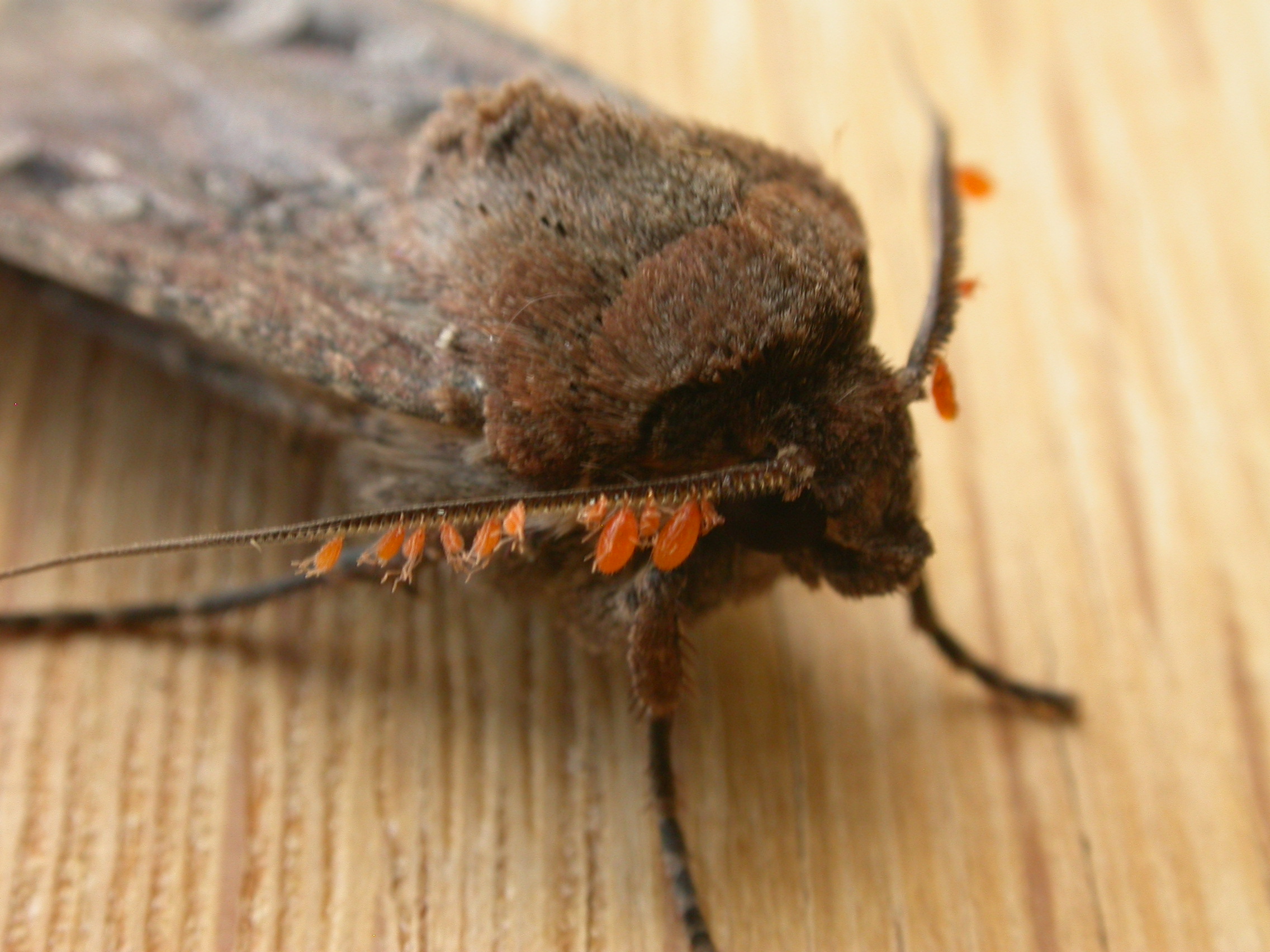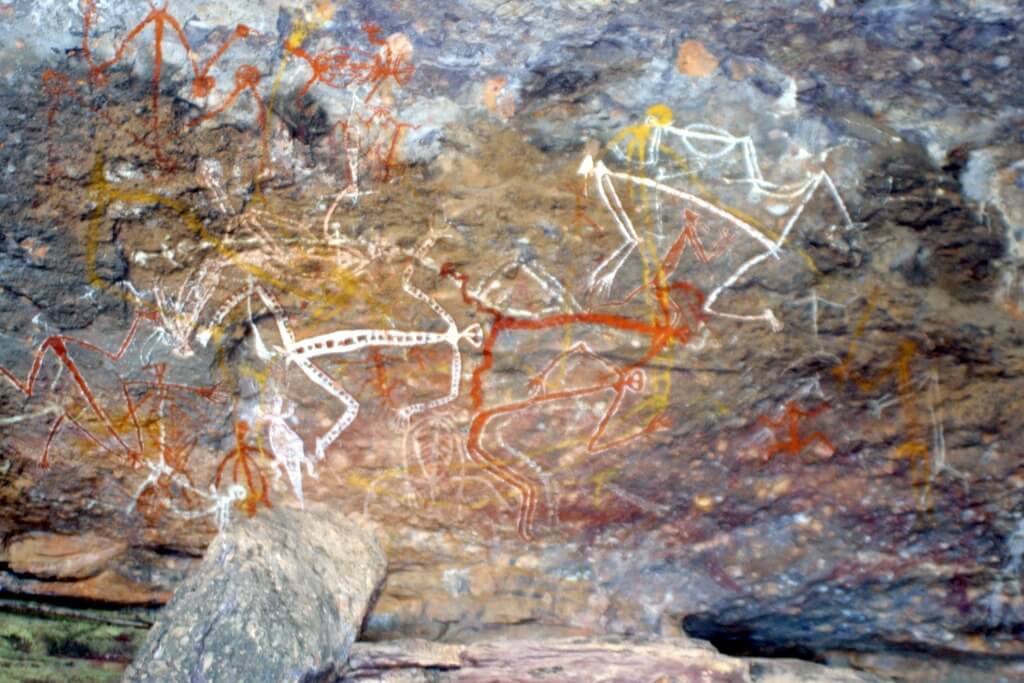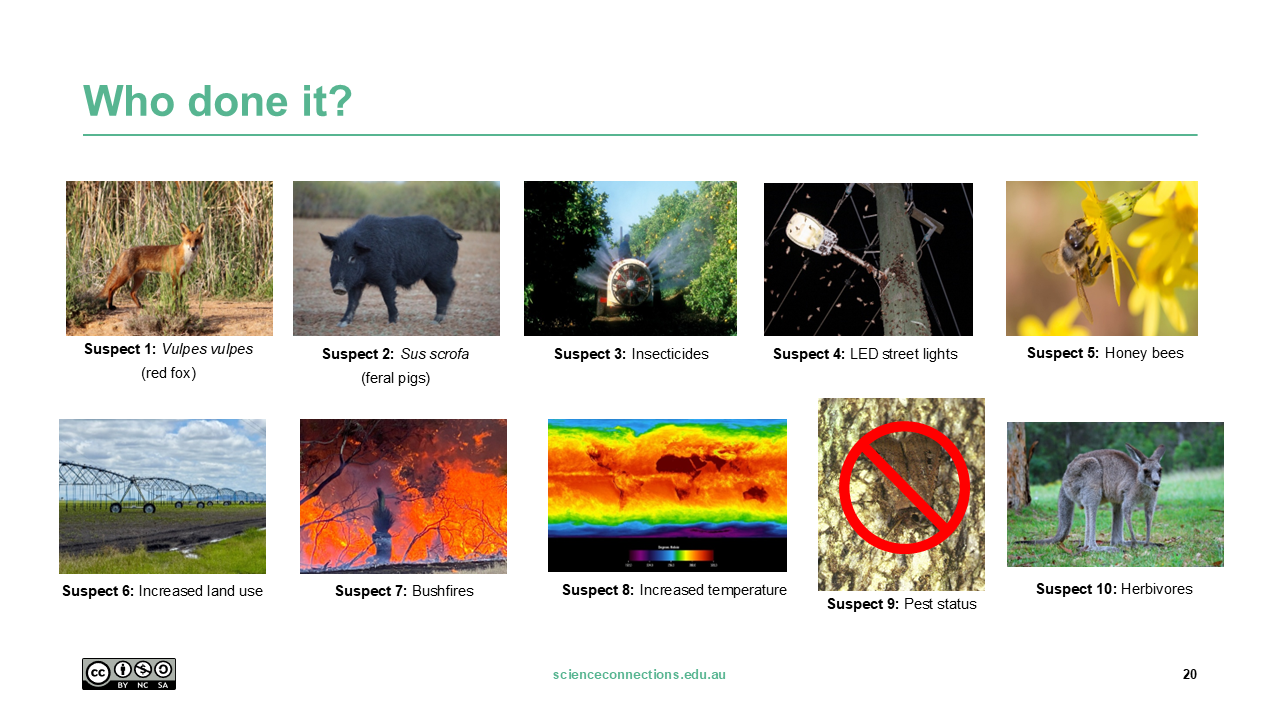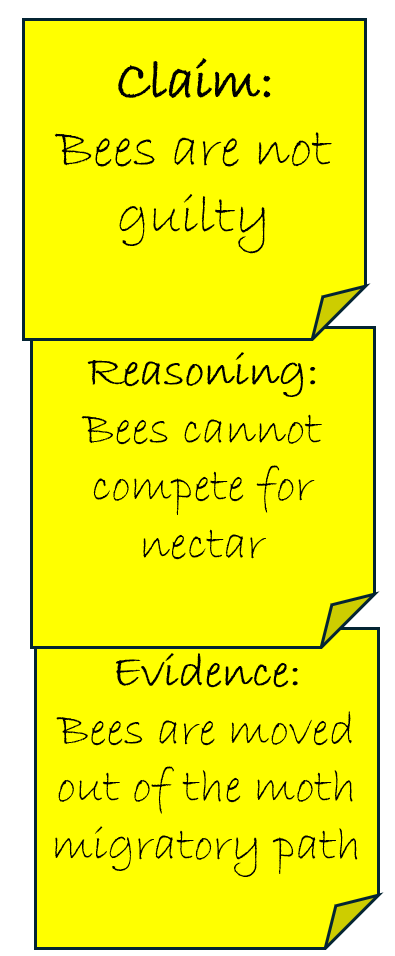Breeding for balance
View Sequence overviewStudents will:
- examine the unique life cycle and migration of bogong moths.
- use information from scientific papers to identify possible causes of the decline in the bogong moth population.
- use argumentation to identify evidence that support their claims
Students will represent their understanding as they:
- identify possible causes of the decline in the population of the bogong moths.
- use argumentation to defend their scientific claims.
In this lesson, assessment is formative.
Feedback might focus on:
- the identification of the advantages and disadvantages of r-strategy reproduction.
- the ability to link the number of offspring produced to the lack of parental care.
- the ability to provide evidence and reasoning to support their claims.
- the ability to identify gaps in conclusions.
- the ability to consider if areas of uncertainty could lead to a viable conclusion.
Whole class
Access to the internet and YouTube for videos
Breeding for balance Resource PowerPoint
Each group
Suspect cards from the Who done it? Resource sheet (laminate to allow for reuse)
Sticky notes
Each student
Individual science journal
Bogong moth jury Resource sheet
Lesson
Re-orient
Recall the previous lesson, focusing on the difference between r-strategy and K-strategy reproduction and the advantages of each.
The Inquire phase allows students to cycle progressively and with increasing complexity through the key science ideas related to the core concepts. Each Inquire cycle is divided into three teaching and learning routines that allow students to systematically build their knowledge and skills in science and incorporate this into their current understanding of the world.
When designing a teaching sequence, it is important to consider the knowledge and skills that students will need in the final Act phase. Consider what the students already know and identify the steps that need to be taken to reach the level required. How could you facilitate students’ understanding at each step? What investigations could be designed to build the skills at each step?
Read more about using the LIA FrameworkIdentifying and constructing questions is the creative driver of the inquiry process. It allows students to explore what they know and how they know it. During the Inquire phase of the LIA Framework, the Question routine allows for past activities to be reviewed and to set the scene for the investigation that students will undertake. The use of effective questioning techniques can influence students’ view and interpretation of upcoming content, open them to exploration and link to their current interests and science capital.
When designing a teaching sequence, it is important to spend some time considering the mindset of students at the start of each Inquire phase. What do you want students to be thinking about, what do they already know and what is the best way for them to approach the task? What might tap into their curiosity?
Read more about using the LIA FrameworkPopulation crash
Pose the question: How could we use our understanding of r- and K-strategies to help save animals?
Introduce and describe the life cycle of the bogong moth. Watch the video Mysteries of the Bogong Moth (3:42).
Discuss the lifespan of an adult bogong moth (8 months), which means the adults never meet their offspring. This means each year, offspring fly over 1,000 km without any previous experience or guides.
(Slide 18) Discuss the migratory pathway of the moths. Introduce the idea that the adults must survive the migration to breed each year, as larvae cannot wait out a drought or pause development or move to another area.
(Slide 19) Discuss the three graphs showing the decline in bogong moth populations 2011-2020. Identify that no real numbers are provided on the graphs, as over 70,000 moths can appear in the caves during ‘abundant years’. This is too many to count. Instead, the numbers are relative:
- 3=good abundance
- 2=normal-poor abundance
- 1=bad abundance
- 0=none sighted
Identify that all populations ‘crashed’ in 2017-2020.
Pose the question: Who or what caused the crash in the bogong moth population?
The bogong moth (Agrotis infusa)
The bogong moth (Agrotis infusa) is a migratory insect endemic to Australia.

The bogong moth (Agrotis infusa) is a migratory insect endemic to Australia, notable for both its long-distance seasonal migration and cultural significance to Indigenous Australians. Each spring, newly emerged adults leave their breeding grounds in western and north-western New South Wales, southern Queensland, western Victoria, and eastern South Australia. Driven by increasing temperatures and deteriorating environmental conditions, they migrate distances of up to 1,000 km to reach the cooler alpine and subalpine regions of south-eastern Australia.
Upon arrival at high elevations—particularly in the Brindabella Ranges, Bogong Peaks, Snowy Mountains, Mt. Buffalo, and the Hotham and Bogong High Plains—bogong moths seek out caves to enter a state of aestivation. This dormancy, which can last up to four months, allows them to conserve energy and avoid the summer heat. During peak aestivation, moths can gather in large numbers, up to 17,000 individuals per square metre. After aestivation, individuals return to their original breeding grounds, reproduce, and die. Larvae then develop in soil during the winter months, feeding on the stems of ground-level broadleaf plants. Pupation occurs 2–3 cm underground in late winter, with adult emergence in the following spring.
Recent climate change is causing increased average temperatures and decreased snowpack duration in the Australian Alps. This has likely contributed to a marked decline in moth populations. The summer of 2017–2018 recorded an unprecedented crash in bogong moth numbers at multiple long-term monitoring sites, including Mt. Gingera, Mt. Morgan, Mt. Buffalo, and Dead Horse Gap. By January 2019, some formerly active caves recorded zero individuals.
While a slight recovery was observed during the 2019–2020 season, overall abundance remains depressed. This decline is of ecological concern, given the moth’s role as a keystone species providing energy for the Mountain pygmy possum, Antechinus marsupial mouse, and other animals. The reduction in migratory biomass has potential cascading effects on the broader alpine food web.
The bogong moth (Agrotis infusa) is a migratory insect endemic to Australia, notable for both its long-distance seasonal migration and cultural significance to Indigenous Australians. Each spring, newly emerged adults leave their breeding grounds in western and north-western New South Wales, southern Queensland, western Victoria, and eastern South Australia. Driven by increasing temperatures and deteriorating environmental conditions, they migrate distances of up to 1,000 km to reach the cooler alpine and subalpine regions of south-eastern Australia.
Upon arrival at high elevations—particularly in the Brindabella Ranges, Bogong Peaks, Snowy Mountains, Mt. Buffalo, and the Hotham and Bogong High Plains—bogong moths seek out caves to enter a state of aestivation. This dormancy, which can last up to four months, allows them to conserve energy and avoid the summer heat. During peak aestivation, moths can gather in large numbers, up to 17,000 individuals per square metre. After aestivation, individuals return to their original breeding grounds, reproduce, and die. Larvae then develop in soil during the winter months, feeding on the stems of ground-level broadleaf plants. Pupation occurs 2–3 cm underground in late winter, with adult emergence in the following spring.
Recent climate change is causing increased average temperatures and decreased snowpack duration in the Australian Alps. This has likely contributed to a marked decline in moth populations. The summer of 2017–2018 recorded an unprecedented crash in bogong moth numbers at multiple long-term monitoring sites, including Mt. Gingera, Mt. Morgan, Mt. Buffalo, and Dead Horse Gap. By January 2019, some formerly active caves recorded zero individuals.
While a slight recovery was observed during the 2019–2020 season, overall abundance remains depressed. This decline is of ecological concern, given the moth’s role as a keystone species providing energy for the Mountain pygmy possum, Antechinus marsupial mouse, and other animals. The reduction in migratory biomass has potential cascading effects on the broader alpine food web.
First Nations Peoples
In the late 1820s and 1830s First Nations Peoples from southeastern regions of Australia were observed harvesting bogong moths.

In the late 1820s and 1830s, during early contact with European explorers and settlers, First Nations Peoples from southeastern regions of Australia were observed harvesting bogong moths as part of their seasonal migrations into the high mountains. Each spring, the moths travel over 1,000 km to the Australian Alps, where they aestivate in rocky outcrops from late September to March. Groups of First Nations Peoples from surrounding traditional lands considered the bogong moths highly nutritious and palatable. The moths were first stupefied with smoke before being scraped off the cave walls and cooked on the fire. The moths were then either eaten directly or ground into cakes using smooth pebbles.
Although conventional archaeological evidence of this practice has been limited, primarily through the analysis of smooth stones, the oral storytelling traditions of First Nations Peoples, and findings by Stephenson et al. (2020) at Cloggs Cave in southeastern Australia have provided definitive archaeological evidence of bogong moth processing. These findings confirm the oral histories and suggest that First Nations Peoples were harvesting and preparing these moths as early as 1600-2000 years ago. This evidence supports the idea that large-scale summer feasts were centered around the bogong moth, highlighting the cultural and dietary importance of the moth in First Nations Peoples' traditions.
For more information, see:
In the late 1820s and 1830s, during early contact with European explorers and settlers, First Nations Peoples from southeastern regions of Australia were observed harvesting bogong moths as part of their seasonal migrations into the high mountains. Each spring, the moths travel over 1,000 km to the Australian Alps, where they aestivate in rocky outcrops from late September to March. Groups of First Nations Peoples from surrounding traditional lands considered the bogong moths highly nutritious and palatable. The moths were first stupefied with smoke before being scraped off the cave walls and cooked on the fire. The moths were then either eaten directly or ground into cakes using smooth pebbles.
Although conventional archaeological evidence of this practice has been limited, primarily through the analysis of smooth stones, the oral storytelling traditions of First Nations Peoples, and findings by Stephenson et al. (2020) at Cloggs Cave in southeastern Australia have provided definitive archaeological evidence of bogong moth processing. These findings confirm the oral histories and suggest that First Nations Peoples were harvesting and preparing these moths as early as 1600-2000 years ago. This evidence supports the idea that large-scale summer feasts were centered around the bogong moth, highlighting the cultural and dietary importance of the moth in First Nations Peoples' traditions.
For more information, see:
The Inquire phase allows students to cycle progressively and with increasing complexity through the key science ideas related to the core concepts. Each Inquire cycle is divided into three teaching and learning routines that allow students to systematically build their knowledge and skills in science and incorporate this into their current understanding of the world.
When designing a teaching sequence, it is important to consider the knowledge and skills that students will need in the final Act phase. Consider what the students already know and identify the steps that need to be taken to reach the level required. How could you facilitate students’ understanding at each step? What investigations could be designed to build the skills at each step?
Read more about using the LIA FrameworkThe Investigate routine provides students with an opportunity to explore the key ideas of science, to plan and conduct an investigation, and to gather and record data. The investigations are designed to systematically develop content knowledge and skills through increasingly complex processes of structured inquiry, guided inquiry and open inquiry approaches. Students are encouraged to process data to identify trends and patterns and link them to the real-world context of the teaching sequence.
When designing a teaching sequence, consider the diagnostic assessment (Launch phase) that identified the alternative conceptions that students held. Are there activities that challenge these ideas and provide openings for discussion? What content knowledge and skills do students need to be able to complete the final (Act phase) task? How could you systematically build these through the investigation routines? Are there opportunities to build students’ understanding and skills in the science inquiry processes through the successive investigations?
Read more about using the LIA FrameworkInterviewing the suspects
(Slide 20) Provide each group of students with a copy of the suspect cards from the Who done it Resource sheet.
Introduce the idea that scientists want to identify the ‘culprit’ that caused the crash in the bogong moth population. Outline the ten possible suspects that have been identified.

(Slide 21) Challenge students to narrow down the list of suspects by identifying which could not have been involved during the years of the bogong moth population crash. Encourage students to use argumentation to support their decisions. Remind students that argumentation is a way to express the evidence and reasoning to back a claim (and not an excuse to ‘argue’ with their peers). Sticky notes can be used to support this process.
✎ STUDENT NOTES: Complete the Bogong moth jury Resource sheet and use the argumentation approach to decide if each suspect is not guilty or remains a suspect:
- Make a claim (suspect or not guilty).
- Provide evidence from the information that supports the claim.
- Provide reasoning that links the evidence to the claim.

Argumentation
Argumentation is the process of systematically providing reasoning to support a claim.

Argumentation is the process of systematically providing reasoning to support a claim. Unlike the commonly used negative term ‘argument’, argumentation involves developing a valid argument or persuasive idea.
At the simplest level, students should be able to provide a claim, evidence, and reasoning. At higher levels, students will be able to identify the limitations of a claim, the underlying assumptions that back the claim, and provide a rebuttal for any counterclaims.
In this lesson, students working at a higher level should be able to identify the following in regards to the graphs shown on Slide 19:
- Limitations: This data was collected over the course of nine years (2011-2020) in Australia. It does not indicate what has happened since that time.
- Backing: This is data from a peer-reviewed article that has been checked by other scientists.
- Counter-claim: The data collected is both historical and current to compare multiple cycles of population crashes.
Argumentation is the process of systematically providing reasoning to support a claim. Unlike the commonly used negative term ‘argument’, argumentation involves developing a valid argument or persuasive idea.
At the simplest level, students should be able to provide a claim, evidence, and reasoning. At higher levels, students will be able to identify the limitations of a claim, the underlying assumptions that back the claim, and provide a rebuttal for any counterclaims.
In this lesson, students working at a higher level should be able to identify the following in regards to the graphs shown on Slide 19:
- Limitations: This data was collected over the course of nine years (2011-2020) in Australia. It does not indicate what has happened since that time.
- Backing: This is data from a peer-reviewed article that has been checked by other scientists.
- Counter-claim: The data collected is both historical and current to compare multiple cycles of population crashes.
The Inquire phase allows students to cycle progressively and with increasing complexity through the key science ideas related to the core concepts. Each Inquire cycle is divided into three teaching and learning routines that allow students to systematically build their knowledge and skills in science and incorporate this into their current understanding of the world.
When designing a teaching sequence, it is important to consider the knowledge and skills that students will need in the final Act phase. Consider what the students already know and identify the steps that need to be taken to reach the level required. How could you facilitate students’ understanding at each step? What investigations could be designed to build the skills at each step?
Read more about using the LIA FrameworkFollowing an investigation, the Integrate routine provides time and space for data to be evaluated and insights to be synthesized. It reveals new insights, consolidates and refines representations, generalises context and broadens students’ perspectives. It allows student thinking to become visible and opens formative feedback opportunities. It may also lead to further questions being asked, allowing the Inquire phase to start again.
When designing a teaching sequence, consider the diagnostic assessment that was undertaken during the Launch phase. Consider if alternative conceptions could be used as a jumping off point to discussions. How could students represent their learning in a way that would support formative feedback opportunities? Could small summative assessment occur at different stages in the teaching sequence?
Read more about using the LIA FrameworkWho done it?
Divide the classroom into a ‘suspect’ side and a ‘not guilty’ side.
Name a suspect and ask students to move to the ‘suspect’ or ‘not guilty’ side of the room. Discuss with different students to provide their evidence and reasoning to support their claim. Encourage students to identify any qualifiers (specified conditions that may limit their claim), backing (underlying assumptions that support the data), or rebuttals (arguments that refute opposing claims or data).
Students could identify the following:
| Name | Suspect or not guilty | Evidence | Reasoning |
|---|---|---|---|
| Fox | Not guilty | Few remains of moths are present during the decline. | It cannot be the cause if they didn’t eat much during the crash. |
| Pig | Not guilty | Moths can survive out of the reach of pigs. | Cannot eat all of the moths present. |
| Insecticide | Suspect | Moth larvae live on the ground in the spray area. | The spray killed the moth larvae. |
| LED street lights | Not guilty | Moths move on after a short rest. | LED lights do not kill the moths. |
| Honey bees | Not guilty | Apiarists move the honey bees out of the migratory path to avoid a decrease in honey production. | Honey bees do not compete during the migratory season. |
| Increased land use | Suspect | Less food is available for the moth larvae. | If the larvae do not survive, then they will not become moths. |
| Bushfires | Not guilty | The drop in the number of moths occurred before the big bushfires. | The fires could not have killed the moths. |
| Increased temperatures | Suspect | The mountain regions could affect the health of the moths. | Possible (although global temperatures are still increasing, but the moth numbers are increasing again) |
| Pest status | Not guilty…but… | Moth larvae live on the ground in the cropping area. | Farmers could be more likely to spray if they think the bogong moth larvae cause damage. |
| Herbivore | Not guilty…but… | Farming practices affect the bogong moth population, but are not the cause of the crash. | The change in farming practices did not occur during the years of the population crash. |
✎ STUDENT NOTES: Add supporting evidence and reasoning or rebuttals that arise as a result of the discussion.
Introduce the idea that in science, more than one factor can affect the outcome and that a scientist’s role can involve separating the different factors.
(Slide 22) Use the diagram of the life cycle of the bogong moth to identify where in the life cycle each of the ‘suspects’ would affect large numbers of moths. Students should identify that the most dangerous period is the larval stage.
Discuss the disadvantage of the r-strategy of reproduction that caused the bogong moths’ population to decrease, including:
- a lack of parents to help offspring learn how to avoid dangers.
- all offspring being located in a limited area.
- offspring relying on ‘innate behaviours’ (behaviours they are born with and cannot unlearn).
This makes the bogong moths most vulnerable in the larval stage, and is why they lay so many eggs (over 2,000 per female).
(Slide 23) Introduce the graph showing the slow recovery of the bogong moth population. Outline the meaning of the x-axis (the months of moth aestivation) and y-axis (the number of sites that moths occupied along a transect on Mt Gingera). Discuss why the population takes time to slowly increase.
Reflect on the lesson
You might:
- compare the bogong moth larvae to other larvae to identify characteristics so they can be distinguished from other cutworms.
- re-examine the intended learning goals for the lesson and consider how they were achieved.
- discuss how students were thinking and working like scientists during the lesson.
Adapt for your context
A jury of ‘science peers’ could be selected to judge each suspect.

A jury of ‘science peers’ could be selected to judge each suspect. Pairs of students could act as ‘lawyers’ for each suspect to argue their case. This has the possibility to be expanded to a science week debate in collaboration with other teachers in your school, including debating coaches and/or teachers specialising in legal studies.
A jury of ‘science peers’ could be selected to judge each suspect. Pairs of students could act as ‘lawyers’ for each suspect to argue their case. This has the possibility to be expanded to a science week debate in collaboration with other teachers in your school, including debating coaches and/or teachers specialising in legal studies.